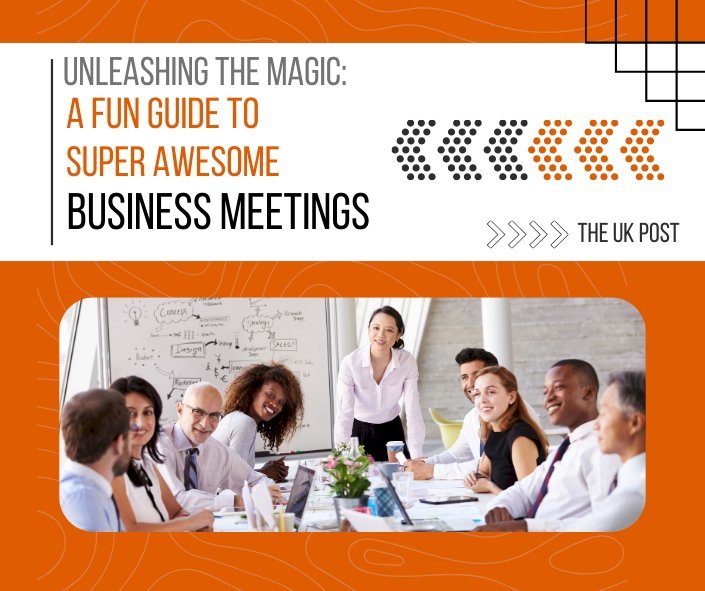Mastering Business Meetings: Strategies for Success in 2024
Learn essential strategies for running successful business meetings in 2024, including preparation, time management, participation, and follow-up tips.

Business meetings are a crucial part of any organization's success. Whether you're in a small startup or a multinational corporation, the ability to conduct effective meetings can make or break a project. In 2024, business meetings are evolving, with new tools, techniques, and approaches to maximize productivity. Understanding how to navigate these changes is vital for ensuring that your meetings lead to actionable results. In this article, we will explore key strategies for successful business meetings, from preparation to execution.
Preparation: The Key to a Successful Business Meeting

Preparation is everything when it comes to business meetings. Before stepping into the meeting room, whether virtual or physical, it's essential to have a clear understanding of the agenda, the participants, and the desired outcomes. Here’s why preparation matters:
- Agenda Planning: A well-structured agenda keeps the meeting on track, preventing time from being wasted on unnecessary discussions.
- Participant Roles: Knowing who will be in the meeting and their roles can help you anticipate questions and prepare responses.
- Goal Setting: Define the objectives of the meeting. This could range from decision-making to brainstorming new ideas.
Preparation ensures that every minute spent in the meeting contributes towards a specific goal, making the meeting more effective and focused.
Setting Clear Objectives: The Foundation of Productive Meetings

Every business meeting should have a clear objective. Without one, meetings can quickly turn into unproductive discussions that waste time and resources. In 2024, companies are increasingly focusing on outcome-driven meetings, ensuring that there is a clear goal to achieve by the end of the session.
- SMART Goals: Setting Specific, Measurable, Achievable, Relevant, and Time-bound objectives ensures that the meeting stays on target.
- Actionable Outcomes: The goal should lead to specific actions that need to be completed, rather than vague concepts.
- Alignment with Business Strategy: Ensure that the meeting's objectives align with the broader goals of the organization.
By having clear objectives, participants know exactly what they need to achieve, and the meeting can be evaluated based on whether those goals were met.
Choosing the Right Meeting Format: Virtual, Hybrid, or In-Person

The format of a meeting can significantly impact its effectiveness. In recent years, virtual and hybrid meetings have become commonplace, offering flexibility and inclusivity. However, each format has its strengths and weaknesses:
- Virtual Meetings: Best for remote teams or when participants are spread across different locations. They are cost-effective but may lack the personal connection of in-person meetings.
- Hybrid Meetings: A blend of in-person and virtual meetings, offering flexibility. However, they require careful management to ensure that remote participants are equally engaged.
- In-Person Meetings: Ideal for complex discussions, brainstorming sessions, or negotiations. They foster stronger personal connections but can be time-consuming and costly.
Choosing the right format based on the nature of the meeting and the participants can enhance engagement and productivity.
Effective Time Management: Keeping Meetings on Track

Time management is one of the biggest challenges in business meetings. Meetings that run too long can lead to disengagement and reduced productivity. Here are some strategies for keeping meetings on track:
- Set Time Limits: Allocate specific time slots for each agenda item and stick to them.
- Use a Timer: A visible timer can help keep everyone aware of the time and ensure discussions don't run over.
- Start and End on Time: Respect the participants' time by starting and ending the meeting as scheduled.
By managing time effectively, meetings can stay focused, and participants can leave with a sense of accomplishment rather than frustration.
Encouraging Participation: Making Sure Every Voice is Heard

One of the keys to a successful business meeting is ensuring that all participants are actively engaged. When everyone contributes, meetings are more dynamic and productive. However, getting everyone to participate can be challenging, especially in virtual settings:
- Active Facilitation: The meeting leader should actively encourage input from all participants, especially those who may be quieter.
- Round-Robin Participation: Go around the room (or virtual room) and give each person a chance to speak.
- Use Polls and Surveys: In virtual meetings, polls and surveys can be a quick way to gather input from participants.
Encouraging participation helps tap into the collective wisdom of the group, leading to better decision-making and more innovative solutions.
Leveraging Technology: Tools to Enhance Meeting Productivity

Technology plays a vital role in business meetings today. From video conferencing tools to collaborative platforms, the right technology can streamline communication and make meetings more efficient. Here are some must-have tools for 2024:
- Video Conferencing Software: Platforms like Zoom and Microsoft Teams continue to dominate, offering features like breakout rooms and screen sharing.
- Project Management Tools: Tools like Trello, Asana, and Monday.com help teams stay organized and track action items from meetings.
- Collaboration Tools: Google Workspace and Microsoft 365 allow for real-time collaboration on documents, making it easy to capture meeting notes and updates.
Leveraging the right technology can make meetings more interactive, organized, and effective.
Post-Meeting Follow-Up: Ensuring Accountability and Progress

The work doesn't stop when the meeting ends. Post-meeting follow-up is crucial for ensuring that the discussions translate into action. Without proper follow-up, decisions made in meetings can be forgotten or neglected. Here's how to ensure effective follow-up:
- Meeting Minutes: Distribute detailed meeting minutes with a summary of key points, decisions, and action items.
- Assign Responsibilities: Clearly define who is responsible for each action item and set deadlines.
- Regular Check-Ins: Follow up with participants to ensure progress is being made on action items.
Effective follow-up helps ensure that meetings are not just talk but lead to real results.
Dealing with Common Meeting Challenges: Tips for Success

Despite the best preparation, meetings can face challenges. From technical issues in virtual meetings to dominating personalities in in-person meetings, here are some strategies for overcoming common obstacles:
- Technical Glitches: Always have a backup plan for technical issues, such as an alternative platform or phone-in option.
- Dominating Participants: The facilitator should ensure balanced participation, redirecting the conversation if necessary.
- Meeting Fatigue: Keep meetings concise and engaging to prevent burnout, and consider alternating meeting formats.
By being proactive and prepared for these challenges, meetings can run more smoothly and achieve their intended outcomes.
Conclusion
Business meetings are an essential part of modern organizations, but they can also be a drain on resources if not managed effectively. By focusing on preparation, clear objectives, the right format, time management, participation, technology, follow-up, and overcoming challenges, meetings can become productive and impactful. In 2024, mastering these strategies will ensure that your business meetings drive success and growth.
FAQ
How do I prepare for a business meeting?
Set an agenda, know the participants, and define objectives.
What is the best format for a business meeting?
Choose virtual, in-person, or hybrid depending on your needs.
How can I ensure everyone participates in the meeting?
Actively facilitate discussions, use round-robin, and utilize polls.
What tools should I use for business meetings in 2024?
Use Zoom, Microsoft Teams, Trello, Asana, or Google Workspace for better collaboration.
How do I follow up after a business meeting?
Share minutes, assign tasks, set deadlines, and conduct regular check-ins.

















